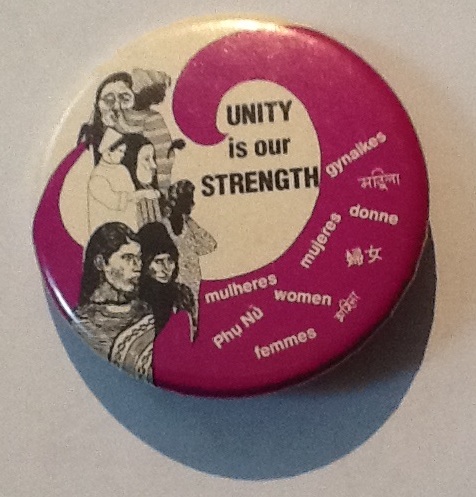 Why should what amounts to a living history of the Canadian women’s movement languish in a few archives and basements when the digital world gives us the opportunity to give a defunct magazine new life? That’s the question some of us Broadside collective members asked ourselves during a memorial for collective member Beverley Allinson. She was the third of three Broadside collective members who has passed away—Jacqueline Frewin and Heather Brown are the other two—and we were becoming acutely aware of the fact that there’d come a time when none of the women who had created the monthly newspaper would be around to talk about it and remember it.
Why should what amounts to a living history of the Canadian women’s movement languish in a few archives and basements when the digital world gives us the opportunity to give a defunct magazine new life? That’s the question some of us Broadside collective members asked ourselves during a memorial for collective member Beverley Allinson. She was the third of three Broadside collective members who has passed away—Jacqueline Frewin and Heather Brown are the other two—and we were becoming acutely aware of the fact that there’d come a time when none of the women who had created the monthly newspaper would be around to talk about it and remember it.
In the meantime, full sets of Broadside were stashed away in various places—at the Canadian Women’s Movement Archives at the University of Ottawa, at the Women’s Resource Centre at the Ontario Institute for Studies in Education, and in the basements of several Broadsiders—gathering dust. Soon they’d be yellowed, brittle and so fragile as to be unreadable.
Online possibilities being what that are, this struck us as ridiculous. So a group of former collective members – Amanda Hale, Donna Gollan, Eve Zaremba, Ingrid MacDonald, Lisa Freedman, Phil Masters, and Susan G. Cole, as well as longtime supporter Ottie Lockey, began meeting to create a plan for bringing Broadside online, with the invaluable assistance of web designer Jean Deeth.
It’s astonishing how seamlessly the collective was able to reinvent itself, this time not for the purposes of producing an issue of the newspaper, but of bringing Broadside into the digital age. As ever, each member committed to a task and then followed through, using all the resources available to us.
You’re now experiencing the results. We imagine many different users of broadsidefeminist.com. An entire generation of young women would never have known anything about Broadside—let alone had access to every article in every issue—had we not completed our project. They deserve the intimate knowledge of a vital and effective women’s movement that the newspaper chronicles.
We haven’t changed anything or cleaned up any copy or photos. This is the unvarnished version that we’re convinced will become an invaluable primary resource for women’s studies students, feminist researchers, and anyone else interested in Canadian history.
We’re also hoping to engage with everyone who lived through that fascinating and inspiring period, a part of history that changed the way many artists create, the way legislators develop law and the way Canadians think.
We invite everyone to share memories, photos and comments of any kind to keep broadsidefeminist interactive and to keep Broadside itself alive.
